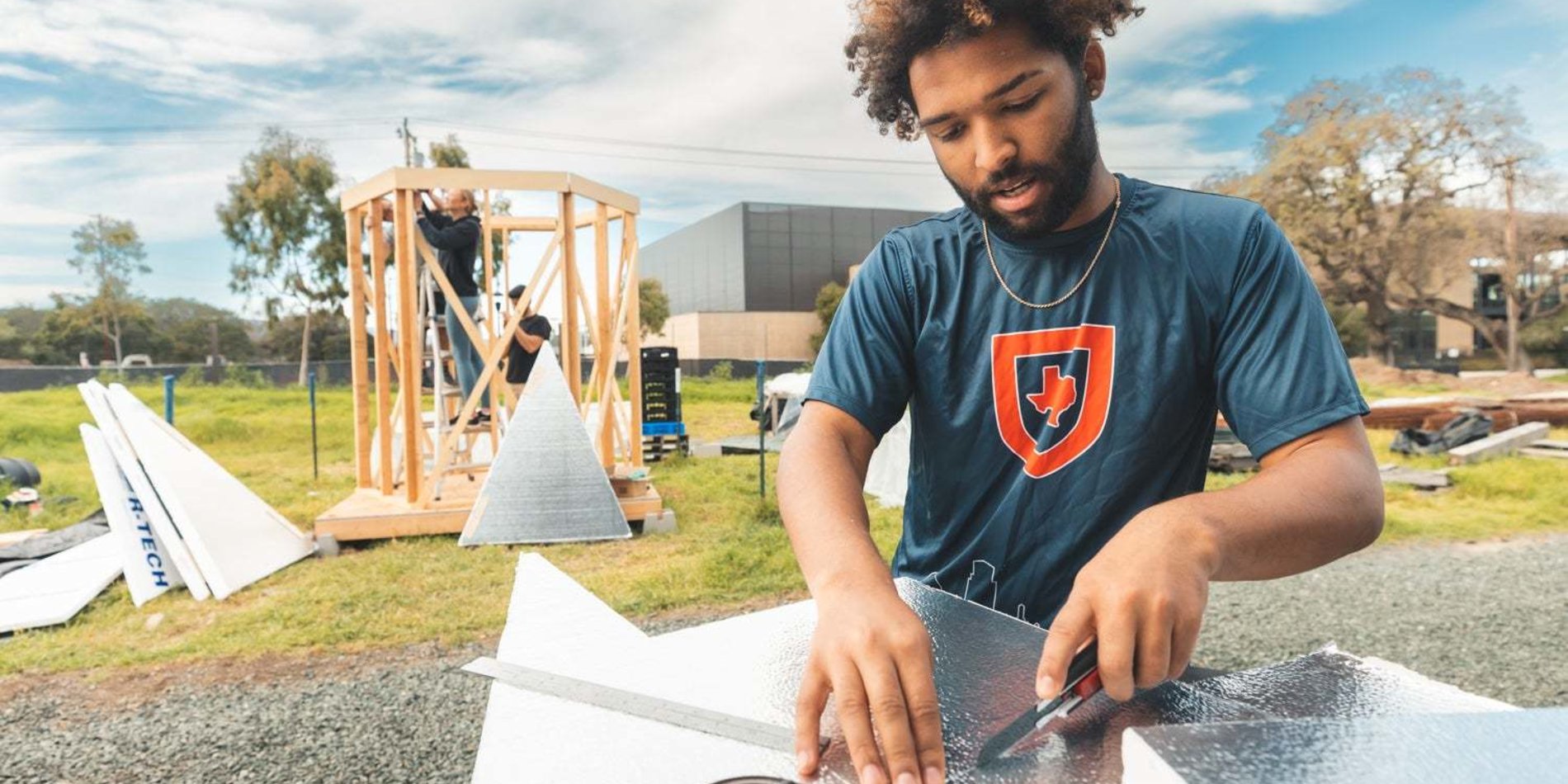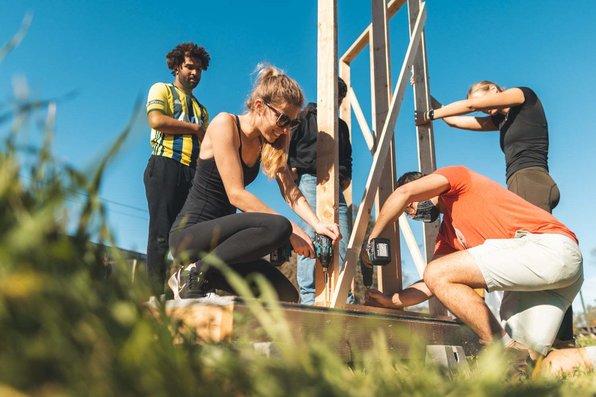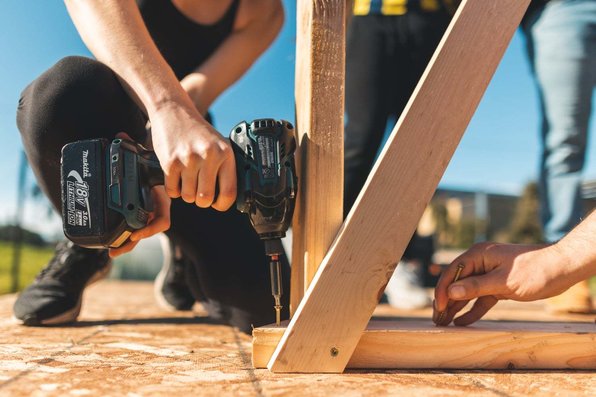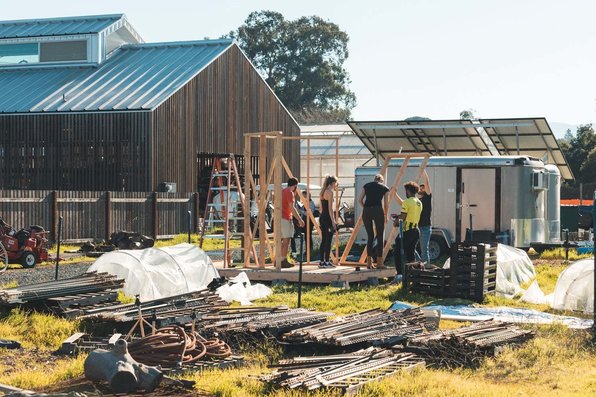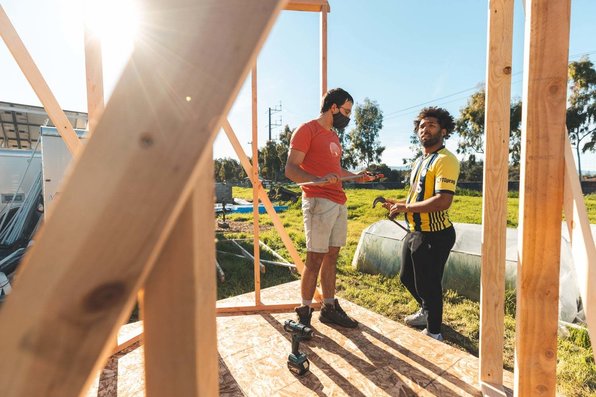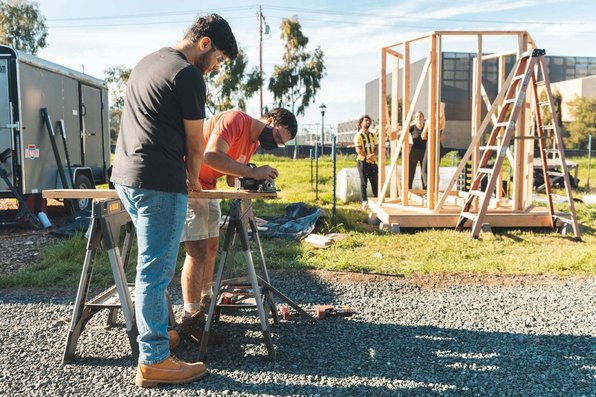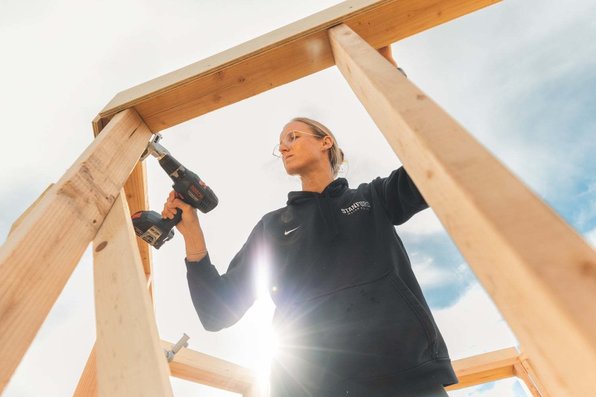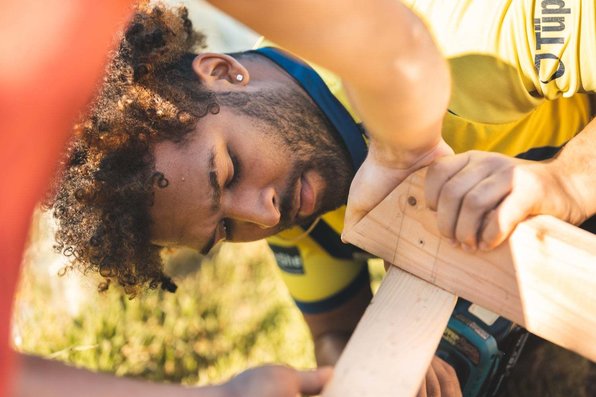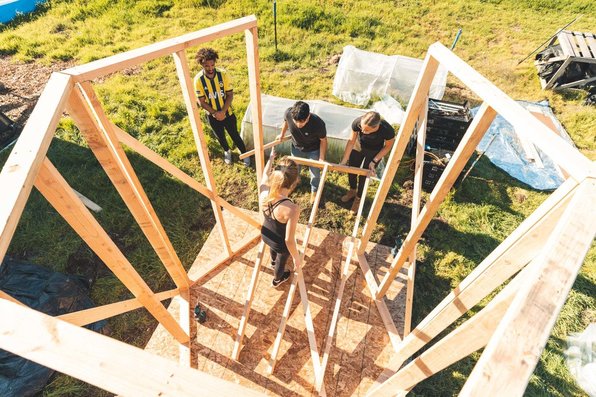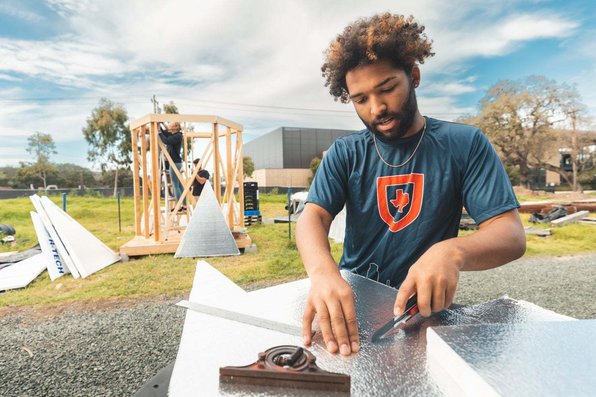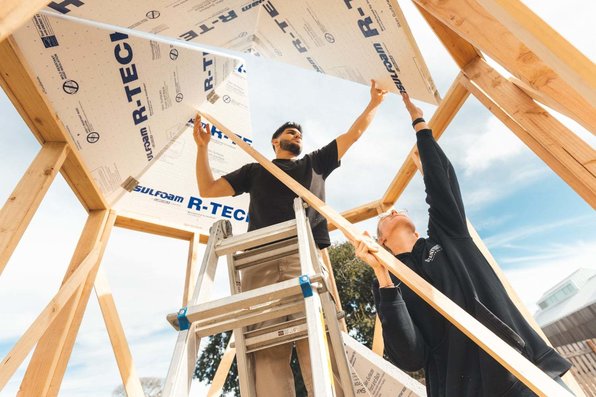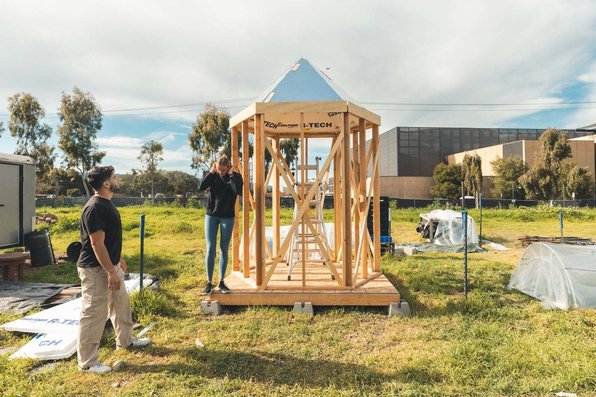Mechanical engineering seniors help design housing for refugees
Makenzie Fischer and Shadi Elaridi stood inside a six-sided wood frame structure on a plot allocated for student projects at the O’Donohue Family Stanford Educational Farm. The mechanical engineering seniors were testing the prototype of a hinged roof their team created for an organization that designs modular homes for refugees.
Working together, they lifted three hinged sets of panels made of foam insulation board with angled mitered joints – one set at a time – and fitted them into guard rails at the top of the walls. It took some maneuvering, but soon the building had a silvery crown.
“It’s working pretty much the way we expected it to work,” said Fischer, stepping back to look at the hexagonal structure. “The mechanisms we put in place to make assembly easy are working, so that’s exciting.”
The sight also made her laugh.
“Now it’s looking like a rocket ship,” she said of the narrow structure the students built to test their roof design. In refugee camps, the dimensions of individual hexagonal structures will be much larger – 180 square feet.
The students are working with Mawa Modular to design homes for Syrian refugees living in Jordan. The organization is developing kit-of-parts dwellings – housing components that can be easily assembled, taken apart, extended and reconfigured into safe and durable homes for refugees and displaced people around the world.
Another team of mechanical engineering students is designing interlocking floor panels that will connect individual hexagonal structures to make multi-room dwellings – creating homes that resemble honeycombs.
The teams partnered with Mawa through Mechanical Engineering Design: Integrating Context with Engineering, a two-quarter course that is the culmination of a bachelor’s degree in mechanical engineering at the Stanford School of Engineering.
The organization, whose name comes from the Arabic word for shelter, was established by students at four U.S. universities, including Bushra Bataineh, who earned a PhD in sustainable design and construction at Stanford in 2019. Mawa received an innovation transfer grant from Stanford’s TomKat Center for Sustainable Energy in 2018 to allow them to advance their idea and develop a viable prototype.
Student Shadi Elaridi said students learned that the average length of time someone spends in a refugee camp is 17 years, but current housing is designed to last only one to five years.
“I envision these homes impacting the lives of many children born in refugee camps around the world and I’m excited for the positivity it will bring into their lives,” he said. “It’s inspiring to think that many individuals who will call refugee camps ‘home’ for the first 20 or so years of their lives will associate that time with a dignified environment.”
During the two-quarter course, students learn skills in engineering design, teamwork, project management, the engineering development process and professional communication – oral, presentation, written documentation and listening – and evaluate the ethical, sustainability, health, environmental and societal impact of their projects.
The course is taught by Jeff Wood, the capstone course and lab project development director in the Department of Mechanical Engineering in the School of Engineering, and Shoshanah Cohen, director of community-engaged learning in engineering at the Haas Center for Public Service.
Click on any photo to start the photo gallery:
Engineering in the real world
Cohen said most mechanical engineering design classes give students a specific challenge with precise technical requirements and ask them to develop something to meet these requirements.
“In real life, engineering projects can be incredibly open-ended, and the necessary data and information isn’t necessarily available,” she said. “You have to find it or derive it or use the knowledge you’ve gained from your educational background and experiences.”
During the course, which is certified as a Cardinal Course by the Haas Center for Public Service, students spend several weeks figuring out who will use the product, what they want and need and how to translate these needs into to technical requirements.
“We want students to get experience working with a real person or organization that needs what they are designing,” Cohen said. “We also want them to get experience working in an assigned team. That’s also real world. You almost never get to choose who you get to work with on engineering design projects.”
Instructors select projects that can have a meaningful impact on problems related to the environment, health and equity.
“We don’t expect students to develop something earthshattering – and we don’t promise the community partner that they’ll solve the problem – but we do expect students to do their best work because there are actual people on the receiving end who can benefit from their efforts,” Cohen said. “We find that students are excited to work on projects with a clear purpose and they take them very seriously.”
Students were inspired by the partnership with Mawa.
“Mawa has a great mission,” said Aidan Fay. “Being able to apply engineering for an explicitly humanitarian cause brings an additional layer of meaning to the course.”
Fischer agrees.
“I think the most powerful thing about engineering is the ability to create positive change in the world,” she said. “This project has immense potential to tangibly improve the lives of refugees. We really hope that our roofing solution will help Mawa accomplish its goal of providing refugees with a more dignified and comfortable living environment.”
Working with community partners
Each of the 12 student teams in Mechanical Engineering Design: Integrating Context with Engineering partners with a Stanford institute, lab or academic department to create their project. These are some of the other projects this year’s students are working on.
- One team is working with the Motion Analysis & Sports Development Lab at the Lucile Packard Children’s Hospital to develop wearable technology that will allow children with cerebral palsy to lead more mobile lives and avoid injuries.
- One team is working with Stanford’s Precourt Institute for Energy to design a new retractable insulation system for greenhouses operated by a farming cooperative in India.
- One team is working with the Woods Institute for the Environment to reduce particulate pollution by designing a system to control the coal feeding process in kilns used for brick manufacturing in Bangladesh.

